Contractors across the Southwest are emerging from the pandemic with a sense of resiliency after having developed their own strategies for survival—and, in many cases, success. The changes in processes and procedures vary from firm to firm, depending upon their markets and most immediate needs.
At Hensel Phelps, “It was all about frequent, detailed and timely communication, coupled with supportive resources,” says Anthony Jeffers, project development director for the company’s Phoenix office. “We created a website for our employees to help them address their questions about health and safety.”
|
Related Link |
The firm ranked No. 3 among ENR Southwest’s Top Contractors. Despite the pandemic, the company completed two major Phoenix transportation projects. Delivered in December 2020, the PHX Sky Train Stage 2 was a $325-million contract comprising two miles of elevated, on-grade and below-grade guideway system connecting PHX Terminal 3 to the Rental Car Center with two elevated stations. And in June 2021, Hensel Phelps finished the $90-million design-build Valley Metro Light Rail Operations and Maintenance Center Expansion, increasing the capacity of the active maintenance facility and yard.
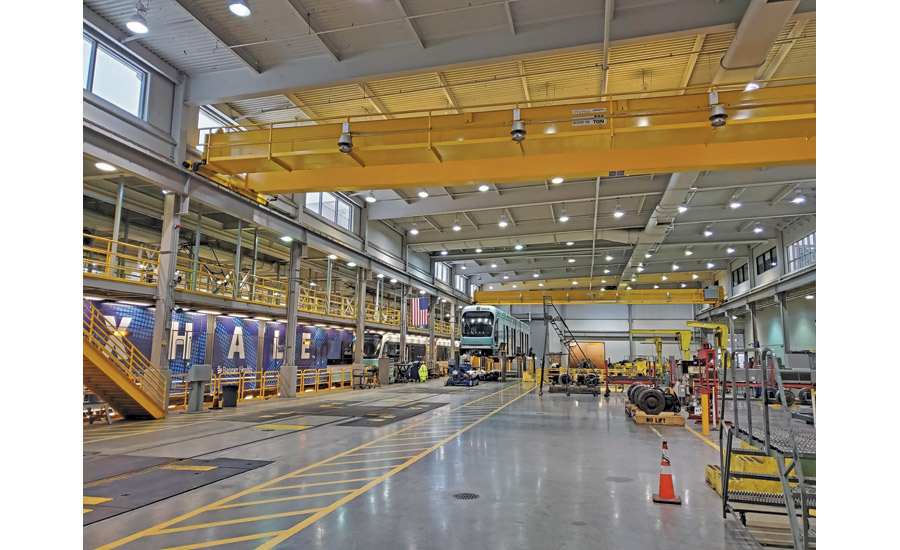
OPERATIONS: Construction of the Valley Metro Light Rail Operations and Maintenance Center Expansion in Phoenix, completed in June, was led by Hensel Phelps.
Image courtesy Hensel Phelps
Other firms used the pandemic year to institute sweeping changes to their operations and daily processes.
“Last year was about pivoting, changing, transforming: How many ways can we say ‘change?’” says Steve Whitworth, president of Kitchell Contractors. The employee-owned company ranked No. 9 in the Southwest. The changes required everyone to “communicate, communicate, communicate,” he says. “High-touch (without touching) and frequent interactions at all levels were the foundation of our success last year.”
The firm’s ongoing protocols include daily health checks, contact tracing and enhanced safety procedures with temperature checks, face coverings, staggered shifts and adjustable work schedules, he says.
During the worst of the pandemic, in October 2020, the Kitchell team delivered the 167,000-sq-ft We-Ko-Pa Casino Resort, an approximately $115-million project (construction cost) at Fort McDowell outside Scottsdale, Ariz.
The University of Arizona Grand Challenges Research Building in Tucson, a seven-story, 115,000-sq-ft interdisciplinary research facility, will begin construction in July. And the $596-million Valleywise Health Medical Center, a 10-story, 673,000-sq-ft hospital, will replace the Maricopa Medical Center. That job is expected to finish in 2023.
“Frankly, we adapted better than I’ve experienced in my three-plus decades of being in this industry,” Whitworth says. “There were lessons learned from this experience that will stay with us long after the pandemic is over.”
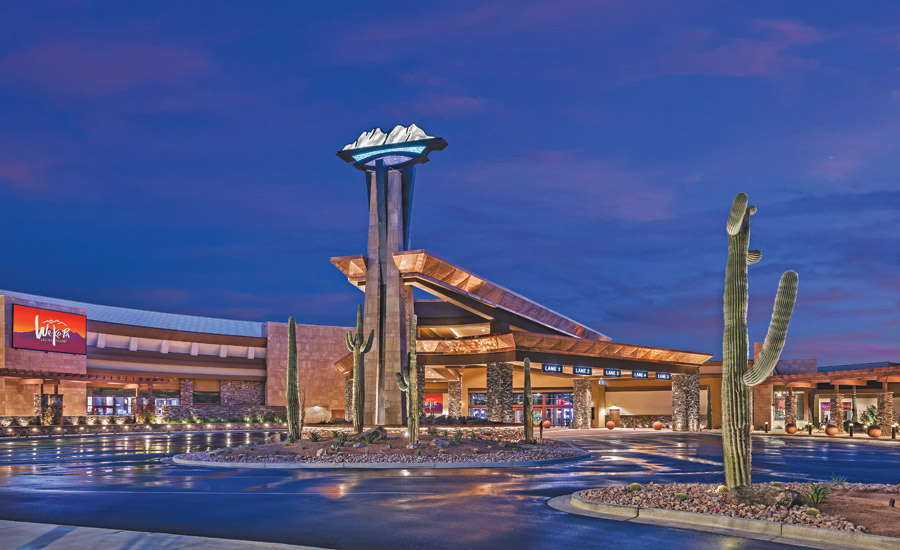
GAMING: Kitchell Contractors delivered the We-Ko-Pa Casino Resort in 2020 at Fort McDowell, near Scottsdale, Ariz.
Image by Mark Botsclair
Flexible and Innovative
Tempe, Ariz.-based Sundt continued work on a number of projects through the pandemic. In Tucson, the $59-million UA Student Success District should be delivered this summer. As Sundt’s 58th contract on the University of Arizona campus, the project includes renovation of the 1926 Bear Down Gym, listed on the National Register of Historic Places. Sundt ranked No. 5 on this year’s ENR Southwest Top Contractors list.
“Our teams did not make any excuses because of the pandemic, but instead maintained their schedules and problem solved around the supply-chain issues and workforce shortages,” says Tucker Macon, project director for Sundt’s Southwest Building Group.
The company is expected to complete the $74.35-million Interstate 10 and Ruthrauff Road improvement project, also in Tucson, this fall. The I-10 interchange will carry traffic over the freeway and the Union Pacific Railroad tracks, reducing congestion and enhancing safety. The $143-million Gila River Hotels & Casinos–Wild Horse Pass Expansion in Chandler, also scheduled for delivery this fall, includes a 165,000-sq-ft, 11-story tower that connects to the property’s existing hotel. The 150-ft-tall structure will add 205 guest rooms for a total of 447 guest rooms at the property.
At Mortenson, “Three words defined our company throughout the past year: resilient, flexible and innovative,” says Brian Fitzpatrick, director of operations for the contractor’s Chandler, Ariz., office. The company ranked No. 12 among ENR Southwest’s Top Contractors.
To make sure it was following CDC guidelines, Mortenson established safety controls such as installing plexiglass between tasks and people in close quarters and initiating new permitting systems.
“Due to the flexibility and resiliency of Mortenson’s leadership and team members, we maintained stability throughout those unchartered times,” he says.
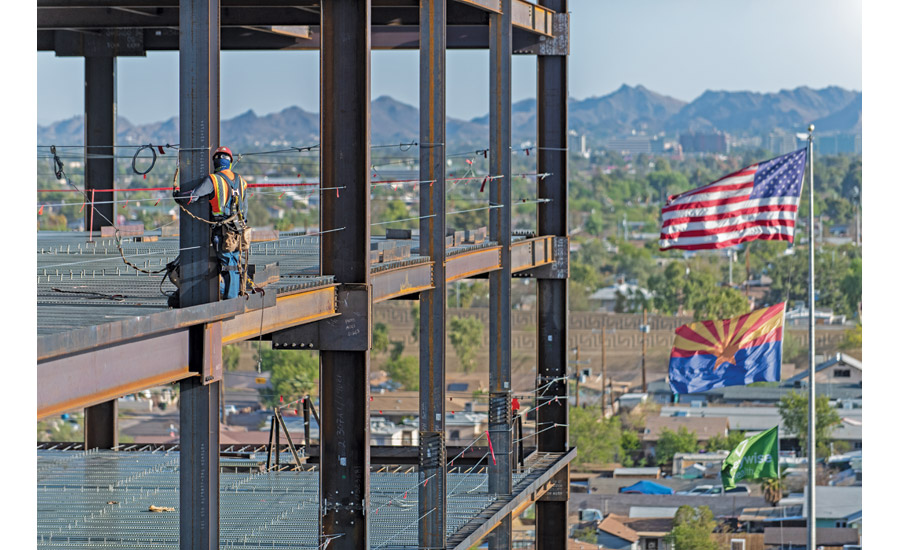
HEALTH CARE: Kitchell continues work in Phoenix at the Valleywise Health Medical Center.
In 2020, Mortenson moved forward on 10 regional projects and in August delivered the 156,611-sq-ft, eight-story Hyatt Place/Hyatt House in Tempe at ASU’s Novus Innovation Corridor. Crews used 360-degree virtual technology and imaging to complete the $47-million project. Also last year, robotics and UAVs helped Mortenson deliver the $1-billion, 1.78-million-sq-ft Allegiant Stadium in Las Vegas.
“There were lessons learned from this experience that will stay with us long after the pandemic is over.”
— Steve Whitworth, President, Kitchell Contractors
“While the past year was unexpected for many industries, Mortenson was fortunate to continue to see strength in various markets—especially within development, which allows us to help our customers solve complex challenges and bring projects to life,” Fitzpatrick says.
In March 2020, the company broke ground on the $44-million Hyatt Place Downtown in Phoenix. The 238-key, eight-story hotel is being completed with co-developer and owner-operator Pacific Hospitality Group, Irvine, Calif. Expected to open in September, the hotel incorporates a design emulating the Art-Deco style of the adjacent 1929 Orpheum Theater, which is listed on the National Register of Historic Places.
Also in the Novus Innovation Corridor at ASU, the $113-million, 185,000-sq-ft Arizona State University Multi-Purpose Arena is scheduled to open in the fourth quarter of 2022, a project Mortenson is doing in conjunction with SCI Architects, New York City.
And with a May 2022 expected opening, the 184,000-sq-ft Beam on Farmer, with design partner RSP, will be the first cross-laminated timber office building in Arizona, offering integrated technologies such as underfloor air distribution and a needlepoint bipolar ionization system designed to significantly reduce transmission of many viruses.
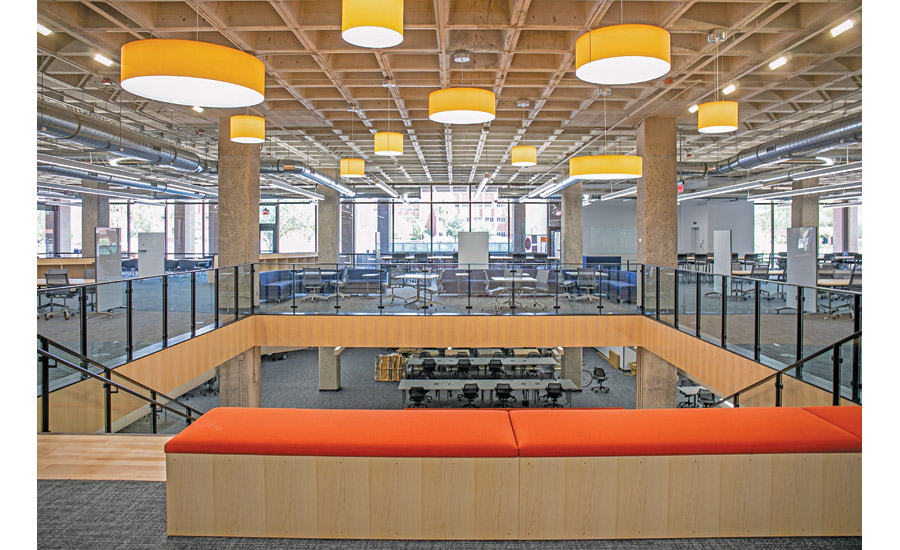
HIGHER ED: Scheduled for completion this summer, the UA Student Success District will be the 58th project completed by Sundt at the UA campus in Tucson.
Image courtesy Sundt
Moving Forward
Tom Dunn, president of the Arizona Builders Alliance in Phoenix, says that 2021 has delivered “extremely strong demand” but also has brought “concerns regarding continued skilled labor shortages, supply-chain problems and looming federal legislative and regulatory actions.”
Mortenson’s Fitzpatrick says that the pandemic’s supply chain disruption also continues to challenge contractors. “We diligently consider procurement implications of availability of materials and labor and our downstream supply-chain effects because of the pandemic,” he says.
Still, the company is bullish on the hospitality and manufacturing sectors. “While other parts of the country and other markets lost employment, manufacturing increased in Arizona throughout the pandemic, and the state is now home to three EV manufacturing companies,” Fitzpatrick says, citing figures from the Arizona Chamber of Commerce’s Manufacturing Council.
Jeff Hamilton, project director for Sundt’s transportation group, expects aviation to soar back. “We are already seeing more people traveling in recent weeks compared to most of 2020,” he says.
Phoenix’s Sky Harbor International Airport receives considerable passenger facility charge (PFC) funds for its projects, he notes. “With the increase in travel, PFC funding will trigger projects Phoenix has had on hold, so the industry can expect accelerated design and construction activity,” Hamilton says.
At the same time, the increased focus on the Southwest, Arizona in particular, by large semiconductor businesses is strengthening, and Hensel Phelps is optimistic about all mission critical sectors, Jeffers says. These include manufacturing of aerospace, chip and electric vehicles as well as data centers, health care, multifamily and mixed-use projects.

OFFICES: When it opens in May 2022, the 184,000-sq-ft Beam on Farmer, being built by Mortenson with design partner RSP, will be the first cross-laminated timber office building in Arizona.
Image courtesy Mortenson and RSP Architects
“We are already seeing more people traveling in recent weeks compared to most of 2020.”
— Jeff Hamilton, Project Director, Sundt Transportation Group
At the same time, lessons from the pandemic continue: “Be prepared for whatever may come next, whether it’s another pandemic or some other disruption,” he says. “As the market picks up and demand increases, we are emphasizing the need for effective and timely communication with employees, trade partners, designers, engineers, suppliers and owners in order to best manage realistic expectations.”
As one of the country’s leading health care builders, Kitchell also expects continued growth for hospitals and clinics, including retrofits and expansions. “Most acute-care hospital renovations and pediatric projects remain unabated. We anticipate more demand for flexible and adaptable space in all sectors,” Whitworth says.
In addition, “Higher ed, commercial and Native American clients continue to plan projects, and we’re looking at biosciences, pharmaceutical and manufacturing markets in our core geographies,” he says.
The new reality of employees working in a hybrid environment concerns everyone. “With the success many have experienced working remotely, what can we do to accommodate a distributed workforce while maintaining our culture and a sense of belonging?” Whitworth says.
“The energy and innovation that come from being physically together is unmatched, so we are actively working on solutions that facilitate this type of environment while accommodating those who want the option of working from home a few days a week,” he says.


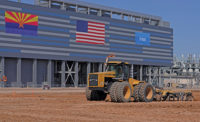
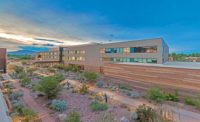

Post a comment to this article
Report Abusive Comment